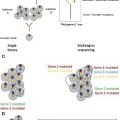
The issue begins with a review of lung cancer genomics by Drs Devarakonda, Masood, and Govindan, who summarized the key findings from the most important studies using next-generation sequencing. Subsequently, Drs Villalobos and Wistuba review the lung cancer biomarkers, a major component of the pathologic diagnosis and therapy decisions, with a detailed description of the histologic subtypes, genomic biomarkers, and immunotherapy.
The following articles describe the standard therapy for non–small cell lung cancer (NSCLC). Drs Chuang, Liang, and Wakelee review the role for neoadjuvant and adjuvant therapy, including the recently completed and ongoing studies with targeted therapy. Drs Tam, Daly, and Kelly describe the standard of care for patients with locally advanced NSCLC, including the chemotherapy choices, radiation therapy techniques, complications, and surveillance. Dr Heist reviews the standard treatment options for the initial treatment of patients with stage IV NSCLC, including the chemotherapy backbone, maintenance therapy, and the role of monoclonal antibodies against vascular endothelial growth factor and epidermal growth factor receptor (EGFR). Second-line therapy and beyond is reviewed by Drs Durm and Hanna, who describe the data supporting the use of docetaxel, pemetrexed, the combination of docetaxel plus ramucirumab, and erlotinib in patients with EGFR unknown or wild type.
The development of targeted therapy has provided a remarkable benefit for patients harboring specific genetic alterations. Drs Pakkala and Ramalingam review the treatment of patients with EGFR mutation, including the initial studies, mechanisms of resistance, and use of third-generation drugs. Drs Arbour and Riely provide the standard therapy for treatment with ALK -positive tumors, including the role of first- and second-generation drugs, mechanisms of resistance, and the important issue of central nervous system disease. Drs Park, Murtuza, Husain, and colleagues review the biology, current and emerging data on multiple targets, including ROS1 , RET , and NTRK1 fusions, BRAF V600E, KRAS, and c-MET exon 14 skipping mutations.
The use of immune checkpoint inhibitors has revolutionized the therapy of NSCLC, with two drugs already approved for patients with previously treated tumors. Drs Du, Herbst, and Morgensztern describe the current data with vaccines and immune checkpoint inhibitors, including the recently completed randomized clinical trials comparing antibodies against PD-1 or PD-L1 to docetaxel and the predictors for benefit from immunotherapy.
Progress in the treatment for patients with small cell lung cancer (SCLC) has been slow with no major changes in the standard of care for the last 15 years and no proven benefit from targeted therapies. Nevertheless, there have been encouraging results over the last two years. Drs Kalemkerian and Schneider provide a detailed review on the management of SCLC, including the choices of chemotherapy, role for thoracic and prophylactic cranial irradiation, and the emerging therapies, such as immune checkpoint inhibitors and rovalpituzumab tesirine (Rova-T), an antibody drug conjugate against DLL-3.
Brain metastases represent a significant problem for patients with both NSCLC and SCLC. Drs Waqar, Morgensztern, and Govindan review the standard of care for patients with brain metastases, including the roles for radiation therapy, chemotherapy, targeted therapy, and the emerging data with immune checkpoint inhibitors.
We thank the authors for their outstanding contributions and hope that readers enjoy this very thoughtful and updated review on the management of lung cancer.
Stay updated, free articles. Join our Telegram channel

Full access? Get Clinical Tree




